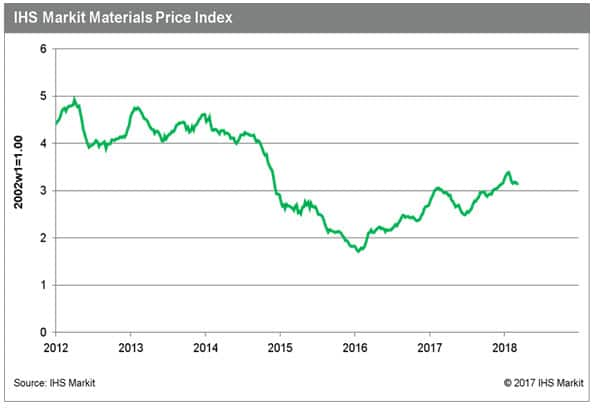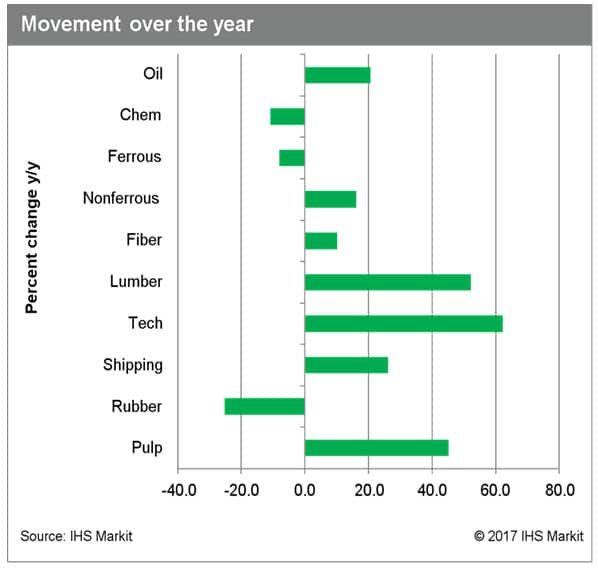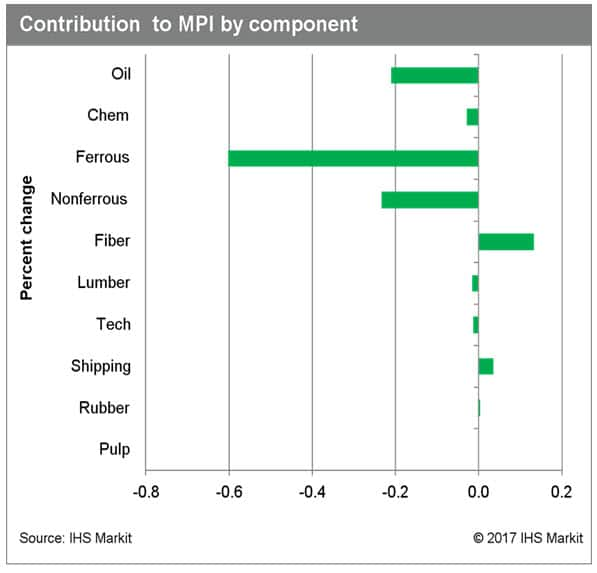Weekly Pricing Pulse: Momentum in commodity markets ebbs
Our Materials Price index (MPI) fell 0.9% last week, its fifth retreat in the past six weeks, pushing the index into negative territory for 2018. The decline was broad based, with six of the ten sub-indexes falling and two showing essentially no change. Nonferrous and ferrous metals led the decline, dropping 3.2% and 2.4%, respectively. Oil also fell, dropping 1.3%.
A combination of factors has been pushing down nonferrous metals recently: higher inventories, a firming US dollar, questions about Chinese growth, and the uncertainty created by the section 232 tariffs in the United States. Questions about Chinese growth also helped push iron ore prices down more than 4.0%, causing the ferrous metals index to fall. Oil prices continued to decline despite a rally on Friday as supply remained strong—US inventories climbed by 2.4 million barrels.
Data releases last week were again mixed in terms of the implications for supply chains. The US employment report came in strong, with 313,000 jobs added in February. While the report is certainly good news, it also indicates wage pressures may be looming—even though wage growth came in below expectations. The Eurozone also remains a source of strength. February’s composite purchasing managers index (PMI) did fall to 57.1, but the retreat appears to be tied to emerging capacity bottlenecks, a sign that supply chains are strained. In China, however, producer prices are once again declining, lending support to our view that growth, especially in China’s manufacturing sector, is indeed slowing. Looking forward, the strong momentum recently seen in commodity markets seems to have dissipated. The question now is whether this change persists into the second quarter; our sense is that it will, based on a combination of slower growth in China, higher US interest rates, and a better balance developing in oil markets.



